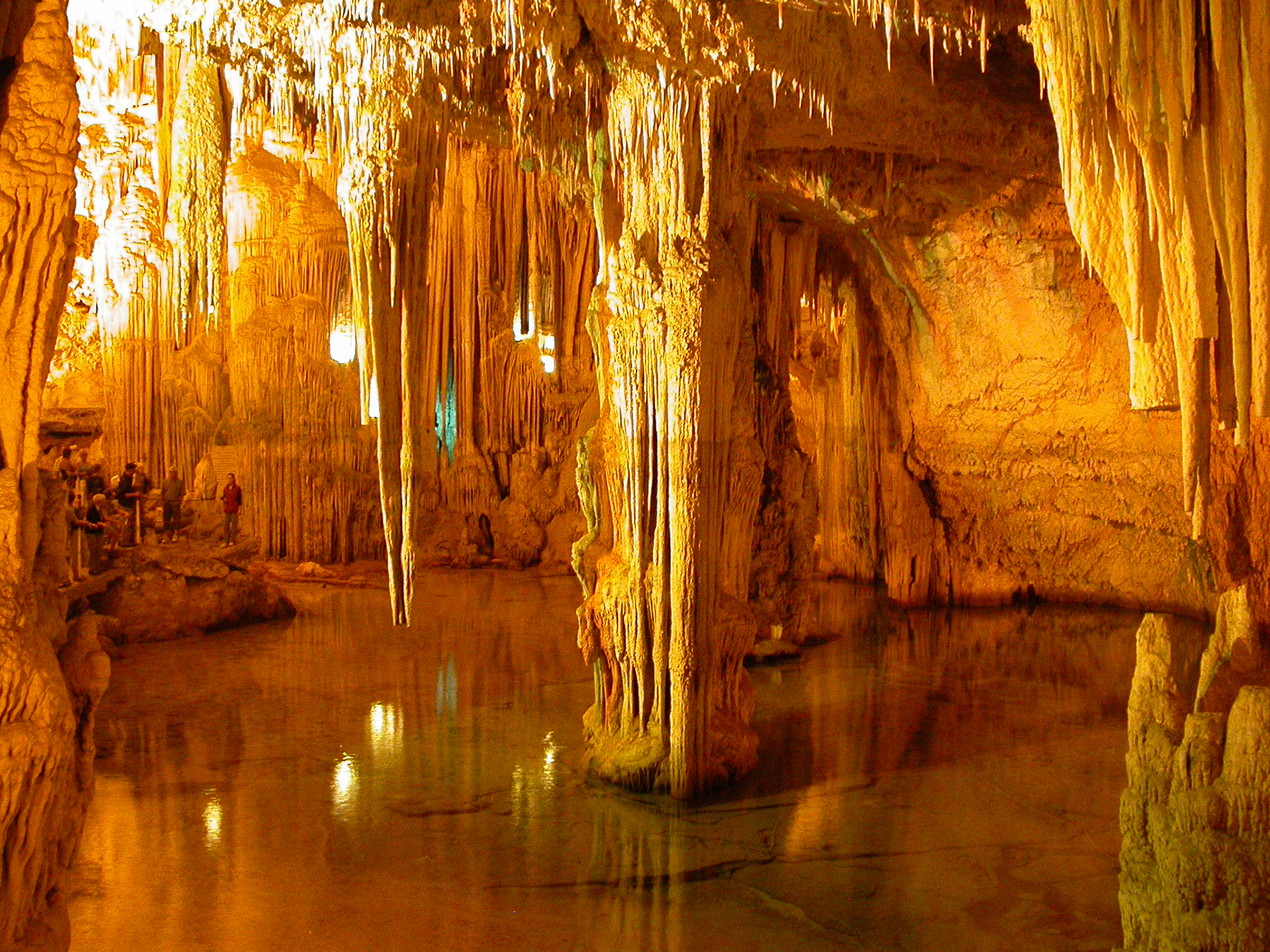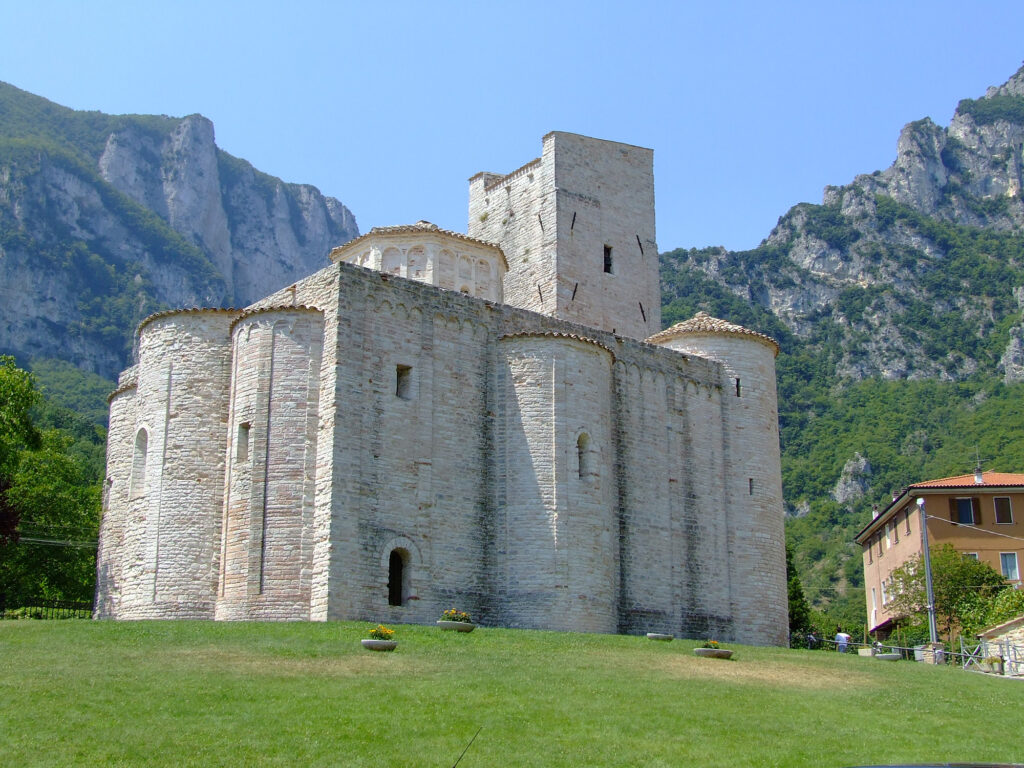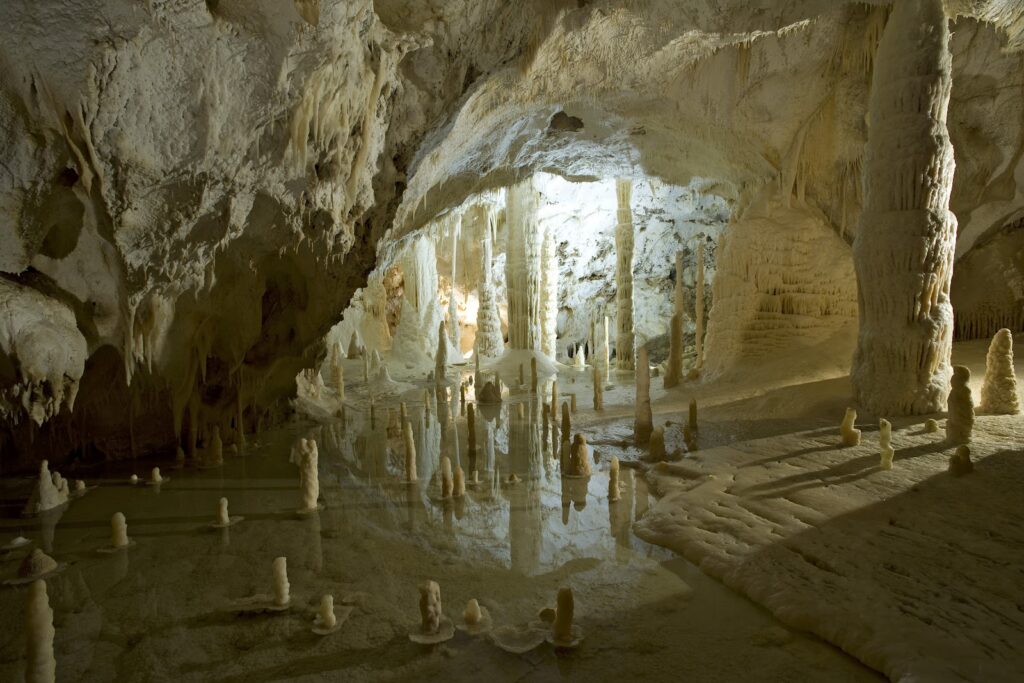
- By: Staff Tibiceco / Senza categoria / 0 Comments
Genga and "Le Grotte di Frasassi"
FRASASSI, THE HIDDEN UNIVERSE by Gianluca Torelli
How do you visit the “Niagara Falls” without crossing the ocean? The answer is just sixty kilometers from Ancona, in the hinterland of the Marche apennines.
Near Genga, a small mountain municipality, there are the famous caves of Frasassi. In reality, what is offered to the visitor’s gaze only vaguely and with much imagination recalls the impressive water wall on the border between the United States and Canada: however, the majesty of this creation of nature is the same, as well as the same is the astonishment and wonder that one feels in front of the beauty of the place.
The search for possible caves in the area began half a century ago. The speleological group of Ancona suspected the existence of vast underground environments, due to the external structure of the ground, the presence of water in abundance and a great karstic phenomenon: classical factors of development of the caves.
The discovery takes place after twenty years of fascinating research and exploration, when a group of people falls into an environment that will later be renamed Abyss Ancona, one of the largest cavities of its kind in Europe: more than 200 meters high, 120 in width and 180 in length. An immense space that could hold many large modern buildings. Huge blocks of stone, collapsed from the upper parts are laid there following the collapses that occurred over time.
The spectacle created in millennia by limestone deposited on the rocks, forming stalactites and stalagmites, leaves you breathless. The imagination of man has thought about the rest, assigning them names of objects and animals, depending on the form. Here are the Giants and the Obelisk, huge stalagmites up to 15 meters high; the Organ Pipes, the Dead Tree, a stalagmite with branched top, just like a tree in winter. And then the Canyon. It is impossible to forget the Cristallizzato Lake, on whose bottom the calcite crystal has settled, emerging and forming small, beautiful rocks.
Those who want to visit the caves can choose between a beautiful and fascinating tourist route and, for those who have more time, speleological routes organized by the Frasassi Consortium, just to allow the vision and access to some areas usually not open to the public.
Whatever option you choose, you will be satisfied with your visit.
Once back in the sunlight, do not think to leave the place hastily. There are other reasons for lingering in the municipality of Genga. The area is indeed rich in testimonies of the past and very interesting natural landscapes. The immediate surroundings of the cave themselves deserve a stop. The beautiful and wild gorge, bordered by the mountains Ginguno and Vallemontagna and about 3 kilometers long, is crossed by the river Sentino. The area, along with others in the surrounding area, is part of a regional park established in 1997 and at present constitutes, with its thousand hectares, the largest green area of the Marche. In these narrow and inaccessible gorges grow plants difficult to find elsewhere. Here also lives and nests the Golden Eagle and those who are lucky can have the opportunity to see one hovering in the sky with its impressive wingspan. There are other animals: foxes, hares, owls and badgers are some of the most visible presences within the area. Paths and streets lead into the area and are ideal place for long walks.
There are also many historical records. It is advisable to start from a cave, the one called the Sanctuary, where a temple was erected by order of Pope Leo XII, on project of the famous architect Valadier. In this scenario the inhabitants of Genga create every year a picturesque living nativity scene.
Another religious building rises to the south of the gorge that houses the caves: it is the church of San Vittore, from the eleventh century, in pure Romanesque style. The complex lived a period of splendor in the thirteenth century, when it had under its control some forty churches, goods and possessions in neighboring municipalities, then decayed from the fifteenth century. Legend has it that the building was built on a pagan temple, but there is almost no evidence to support this.
Certainly the presence of the Romans has left its mark: still today it is possible to admire, in front of the church, the Roman bridge over the Sentino and, for its defense, a truncated Gothic tower. Also in Roman times there was a spa nearby, replaced today by a establishment specialized in mud therapy. The premises of an ancient Benedictine monastery, recently restored, will host the Speleocarsico museum, where you can learn more about the phenomena that gave rise to the evocative caves that are located in this area.
But the historical testimonies are certainly not finished. On a hill to the east stands what remains of the Castle of Pierosara, probably built before the 10th century. Some old man could tell you the legend of Piero and Sara, a love ended in tragedy, from which would take its name the rock. At this point it is only necessary to go up the hill where the village of Genga rises, a small local feud, to make a last tour and to taste some tasty dishes of the local gastronomy.



Leave A Comment